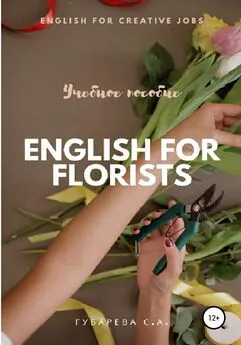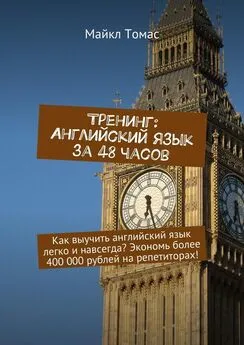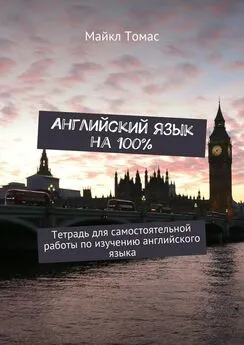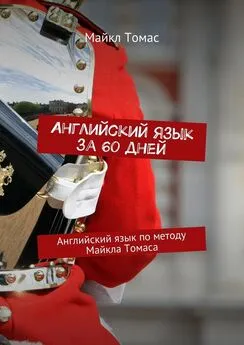Светлана Губарева - Английский язык для флористов
- Название:Английский язык для флористов
- Автор:
- Жанр:
- Издательство:неизвестно
- Год:2021
- ISBN:нет данных
- Рейтинг:
- Избранное:Добавить в избранное
-
Отзывы:
-
Ваша оценка:
Светлана Губарева - Английский язык для флористов краткое содержание
В данном пособии вы познакомитесь со сферой флористики через призму английского языка. Вы сможете различать стили букетов, научитесь составлять резюме, разговаривать с иностранными клиентами и, конечно же, повторите основные грамматические конструкции, которые помогут вам как при собеседовании, так и при оглашении рекомендаций по уходу за купленными цветами.
Английский язык для флористов - читать онлайн бесплатно ознакомительный отрывок
Интервал:
Закладка:
New life-style trends ________________(impact) how people see and value flowers and plants.
Sustainability _________(be) really about caring
Now you know:
–A short history of floristry
–Phrases of agreement/disagreement
–How to differ and use Present Simple/Present Continuous/ Present Perfect
–New words:

Unit 2 Flowers in art
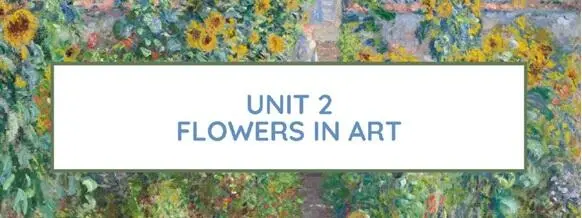
1. Read the quotation and explain how you understand it:
“Open the bloom of your heart and become a gift of beauty to the world.”
– Bryant McGill
2. Discuss the questions:
Do you agree that flowers can bring an inspiration? How?
Can you think of the ways flowers can be used in art?
Do you know any famous paintings with flowers?
3. Look at the paintings and match them with flowers:

4. Read the text about floral motives in paintings in different ages and complete a timeline with a name of period in art and a brief description of each period:
Renaissance – 1400s
Renaissance paintings usedflowers that conveyeddeep philosophical and Christian symbolism as a guide for illuminating divine mysteries. For instance, the white lily was often used as an emblem for the Virgin Mary during this period as a symbol of her purity and radiance.
Baroque & The Dutch Masters – 1600s
The Dutch masters craftedincredible still life scenes, using stark blossoms that seemedto leap beyond the canvas. Though rendered realistically, these arrangements werealmost always artistic fantasies, showing flowers together that would never have been in bloom during the same season.
Impressionism & Post Impressionism – late 1800s
“The Sunflower is mine”—van Gogh. Many Impressionists and Post-Impressionists paintedflowers that werepersonally meaningful to them, as opposed to their cultural or religious symbolism. Van Gogh for example tookthe sunflower as his own personal artistic signature as he createdseveral versions of them and they becamea distinctive and popular part of his body of work.
Expressionism & Fauvism – early 1900s
Rejecting perfectionist styles, expressionists and fauvists depictedeveryday moments in life in a progressive way that was characterised by dramatic use of colour and highly exaggerated forms. Henri Matisse, consideredto be one of the 20th century’s most important French painters, regularly depicted flowers in his works, and is famously quotedas saying ‘There are always flowers for those who want to see them’.
Surrealism & Pop Art – mid 1900s
In the mid 1900’s the depiction of flowers transformedfrom being observations of nature to more abstract forms. Pop Artist Andy Warhol often paintedflowers in a way that could not be pinned down to a particular species.
Post-Modernism – 1970s+
From the end of the 20th century onward, flowers have starred as works of art in their own right. Like Jeff Koons’ 43-foot-tall sculpture of a West Highland Terrier which is covered in a colourful carpet of over 60,000 flowering plants, flowers are no longer just being depicted on canvas.

1400___________________________________
1600___________________________________
1860-1900______________________________
1900-1950______________________________
1950___________________________________
1970-now_______________________________
5. Look through the text again and choose in which grammar tense are the words in bold used:
Present Simple
Past Simple
Future Simple
6. Answer the questions:
In which situations is the chosen grammar tense from exc. 5 used in the text?
What should be added to the verb?
7. Study the rules:
Rules

We use Past Simple:
Facts in the past (usually with concrete time)
I bought flowers yesterday.
We use Past Continuous:
For background actions that were in process in the past
I was buying flowers when she called.
We use Past Perfect:
For actions that happened before action in the past
I went to the floral shop and realized that I had forgotten my keys at home.
8. Put the verbs in brackets in the correct past grammar tense:
a)
Renoir frequently________(paint) roses—most often red ones.
b)
He____________(paint) sunflowers in the garden when she_________(come).
c)
Piet Mondrian, being Dutch,__________(come) from a long cultural tradition of flower art.
d)
Alex _________(go) to the park to paint some lilac when he ________(understand) that he___________(forget) his pencils.
e)
Redon_________(not turn) to flower painting until he_____(be) 60 years old.
f)
When she ___________(gather) flowers she________(hear) a noise behind her.
g)
He ______________(not listen) a lecturer, because he ________(read) about foral design before.
9. Choose one of the following floral art-projects. Imagine that you’re an author of one of them. Create the story of how you made it using phrases below and past grammar tenses:
Rememberto say:
Which flowers you used
What did you do

USEFUL PHRASES
Ordering information:
Firstly,…
Secondly,…
Thirdly,…
The next thing/point is …
In addition to…
Moreover
Furthermore
Also
Showing contrast:
However
Nevertheless
Despite / in spite of…
On the other hand,…
Finishing the story:
As a result
Finally
In conclusion
Now you know:
–Historical facts about using flower motives in art
–Phrases to order information, show the contrast and finish the story
–How to differ and use Past Simple/Past Continuous/ Past Perfect
Unit 3 Plant Anatomy

1. Study the names of flowers and give Russian equivalents:

2. Check the description, find out which flowers are described and fill in the gaps:
a)
One of the most interesting colors of a ________ variety is the deep purple of the Queen of the Night________.
b)
The usual_______ flower color is a shade of purple, but white, light blue, pale yellow and pink, and even a dark burgundy color are also found.
c)
_______ oil is an important ingredient in the perfume industry.
d)
Before _______was hung in houses to accompany Christmas trees, it was considered to be a sacred plant by the Druids.
e)
_________ are also known as "frost flowers" because florists often use these flowers during the autumn and winter for the preparation of various floral arrangements.
f)
_________ can live on the ground, attached to woody plants or even thrive under the ground.
g)
_________ has green leaves covered with hairs. Leaves can be heart-shaped or ovate.
h)
Other common names for _________ include lion’s mouth, calf’s snout and toad’s mouth.
i)
_____________ are edible, they have citrus-like taste.
j)
Wood of __________ is used for the production of pallets and furniture.
3. Read the text and fill in the mind-map:
Inflorescence – a group or cluster of flowers arranged on a stem that is composed of a main branch – соцветие
Form and types
Flowers present a variety of combinations in their range of colour, size, form, and anatomical arrangement. They range in size from minute blossoms to giant blooms. In some plants, such as poppy, magnolia, tulip, and petunia, each flower is relatively large and showy and is produced singly, while in other plants, such as aster, snapdragon, and lilac, the individual flowers may be very small and are borne in a distinctive cluster known as an inflorescence. Regardless of their variety, all flowers have a uniform function, the reproduction of the species through the production of seed.
Basically, each flower consists of a floral axis upon which are borne the essential organs of reproduction (stamens and pistils) and usually accessory organs (sepals and petals). The floral axis is a greatly modified stem; it is usually contracted, so that the parts of the flower are crowded together on the stem tip, the receptacle. The flower parts are usually arrayed in whorls but may also be disposed spirally.
There are commonly four distinct whorls of flower parts: (1) an outer calyx consisting of sepals; within it lies (2) the corolla, consisting of petals; (3) the androecium, or group of stamens; and in the centre is (4) the gynoecium, consisting of the pistils.
The sepals and petals together make up the perianth, or floral envelope. The sepals are usually greenish, while the petals are usually colourful and showy. The androecium, or male parts of the flower, comprise the stamens, each of which consists of a supporting filament and an anther, in which pollen is produced. The gynoecium, or female parts of the flower, comprises one or more pistils, each of which consists of an ovary, with an upright extension, the style, on the top of which rests the stigma, the pollen-receptive surface. The ovary encloses the ovules, or potential seeds.
Stamens and pistils are not present together in all flowers. When both are present the flower is said to be perfect, or bisexual, regardless of a lack of any other part that renders it incomplete. When the same plant bears unisexual flowers of both sexes, it is said to be monoecious (e.g. tuberous begonia); when the male and female flowers are on different plants, the plant is dioecious (e.g. holly); when there are male, female, and bisexual flowers on the same plant, the plant is termed polygamous.
A flower may be radially symmetrical, as in roses and petunias, in which case it is termed regular. A bilaterally symmetrical flower, as in orchids and snapdragons, is irregular.

4. Match anatomic words and definitions:

5. Match preposition of place with the pictures according to the blue ball position:
Читать дальшеИнтервал:
Закладка:
